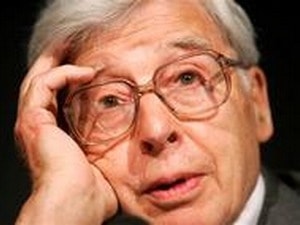Millions of children around the world are born from test tubes.
Since the first baby born by in vitro fertilization cried out 34 years ago in the UK, there have been about 5 million people born in the world using this scientific method.

British biomedical scientist Robert Edward, the "father" of in vitro fertilization. (Source: ajc.com)
According to data released on July 1 at the annual conference of the European Society of Human Reproduction and Embryology (ESHRE) held in Istanbul, Türkiye, each year about 350,000 babies are born through in vitro fertilization, accounting for 0.3% of the 130 million babies born each year worldwide. According to Mr. David Adamson, Chairman of the International Committee for Monitoring Assisted Reproductive Technology (ICMART), this artificial insemination method has brought joy to millions of infertile couples. According to statistics, currently each year there are about 1.5 million in vitro fertilization cases in the world and more than 30% of the cases are performed in Europe. The success rate of this artificial insemination method is quite stable - about 30% of embryos after being implanted in the mother's uterus develop into fetuses.
According to ESHRE, the current trend in Europe is to reduce the number of embryos implanted in the uterus in each artificial insemination to reduce the risks of pregnancy for the mother and increase the weight of each newborn at birth. In vitro fertilization is a fertilization method in which the egg is fertilized by sperm outside the mother's body - in a test tube. This is a method applied after assisted reproductive techniques have failed, applied to couples or women of reproductive age, for whatever reason, sperm cannot fertilize the egg by natural methods.
Ovulation is controlled by hormones and the fertilized eggs are transferred to the uterus. The woman is given gonadotrophins to stimulate the growth of the eggs. This is done under strict medical control, using just the right amount of hormones, and then ultrasound is used to detect the large eggs. When the eggs are large, they are removed when they are mature but have not yet released.
Gondotropins, a human hormone that causes menstrual cramps, are used to stimulate ovulation. Thirty-six hours later, the cytoplasm (containing the egg cells) is removed vaginally (by needle and ultrasound). The eggs in the cytoplasm are fertilized with the previously retrieved sperm, and then returned to the woman's uterus to develop into embryos.
Louise Brown was the first baby born through in vitro fertilization on July 25, 1978 in England. Robert G. Edwards, the British biomedical scientist who successfully developed this method, was awarded the Nobel Prize in Medicine in 2010./.
According to VNA-M






